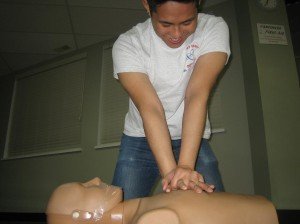CPR or cardiopulmonary resuscitation is considered as a vital lifesaving technique. This can be performed by a trained individual by delivering external chest compressions and rescue breathing in order to keep the blood and oxygen flowing through the body of a victim once the heart and breathing stopped. If CPR is performed within the initial 6 minutes when the heart stopped, it will keep the individual alive until the medical team arrives.
History of CPR
Even though rescue breathing techniques were utilized in reviving drowning individuals in the past, it was only in the 1960s in which external cardiac massage was proven as an effective revival method and the formal CPR program was eventually developed. In its early years, CPR was only offered to doctors but the program was later on expanded to the general public.
The early CPR basically involved separate techniques for the adults, children and infants, but throughout the years, there were changes on how CPR is performed. Individuals who have not received formal training in delivering CPR can perform “hands only” CPR without the rescue breathing since the method is easy to carry out and has proven to save lives until the medical team arrives.
How to perform Hands-only CPR

1. Assess the scene to make sure that it is safe to help out the victim.
2. Check the responsiveness of the individual. You have to shake the shoulder and ask loudly, “Are you okay?” For infants, you have to tap the bottom of the foot to check for the responsiveness.
3. In case the individual is not responsive, call for emergency assistance or ask someone to make the call. If you are alone and the individual drowned or if the victim is a child, perform CPR first for two minutes and call for emergency assistance.
4. You have to locate the hand position. For adults, you have to position the heel of one hand in the middle of the victim’s chest, right in between the nipples. Place the other hand on top of the first hand and lock the fingers so that the fingers are drawn up while the heel of the hand stays on the chest. For children 1-8 years old, use only hand in the center of the chest between the nipples. As for infants, position two fingers in the center of the chest slightly beneath the nipple line.
5. Start the compressions. For adult victims, utilize your upper body to push straight down on the chest at least 2 inches at the rate of 100 compressions every minute, allowing the chest to recoil in between the compressions. For children 1-8 years old, you have to push straight down about 2 inches at the rate of 100 compressions every minute. For infants, push straight down the chest at ½ to 1 inch.
Even with the hands-only CPR, it can still save a life until the medical team arrives on the scene.
